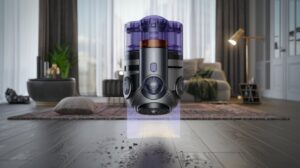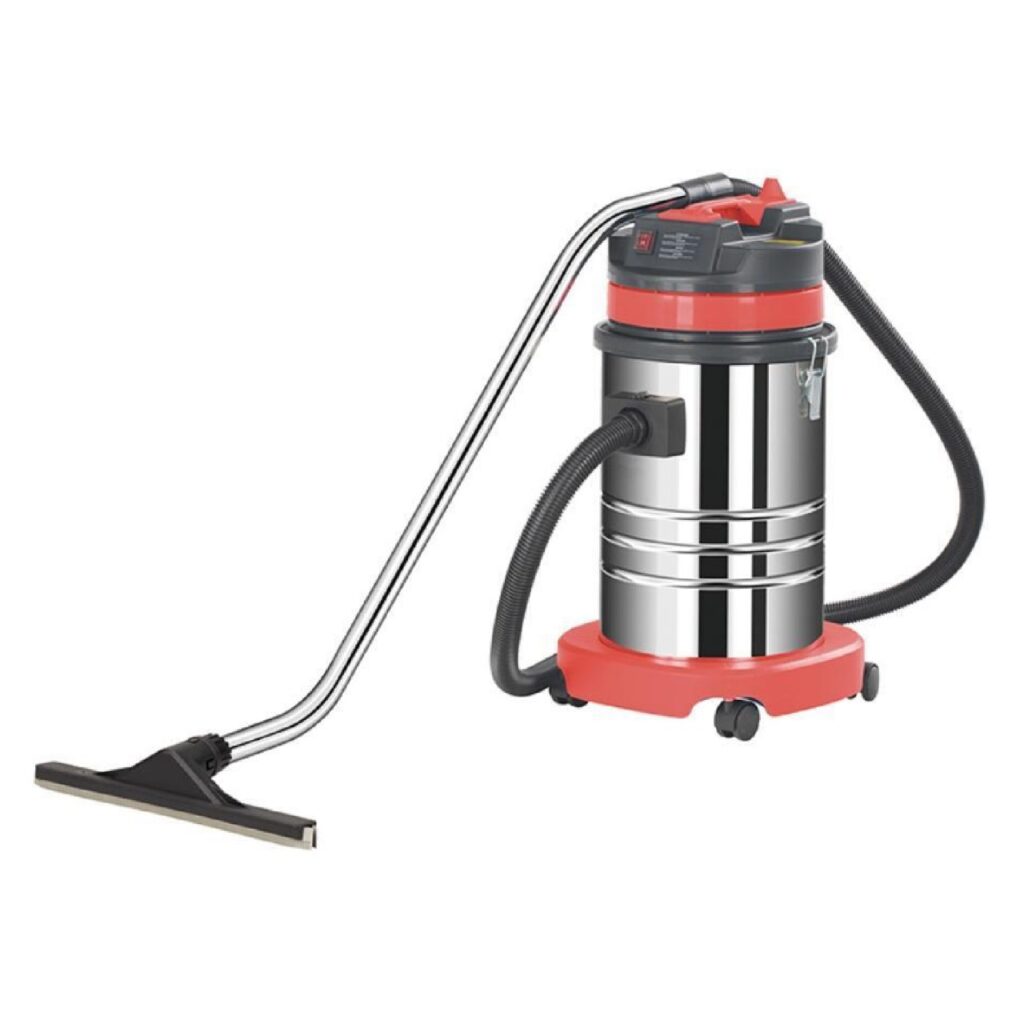Vacuum cleaners have long been a staple in maintaining clean homes, but with technological advancements, they are now more than just cleaning tools—they are intelligent, efficient, and eco-friendly machines. Over the past few years, vacuum cleaner technology has undergone a radical transformation, thanks to innovations like AI-powered vacuums, robotic cleaners, and voice-controlled vacuums. These Technology is Changing Vacuum Cleaning designed to save time and effort, offering automated cleaning schedules, advanced navigation systems, and enhanced filtration to improve home cleanliness and air quality.
As technology continues to evolve, homeowners are seeking smarter and more efficient cleaning solutions. With advanced filtration systems and eco-friendly vacuum cleaners, modern vacuums are becoming increasingly sustainable, helping users maintain a cleaner home while also reducing their environmental impact. In this article, we will explore how technology in vacuum cleaning is changing the way we clean, offering a deeper look at the key trends, innovations, and future possibilities shaping this industry.

1. The Rise of Smart Vacuums
The integration of smart technology into everyday devices has significantly transformed how we live, and vacuum cleaners are no exception. Once seen as simple household tools, today’s smart vacuum cleaners are packed with advanced features that not only enhance their cleaning performance but also make them an integral part of smart home ecosystems. As technology continues to evolve, these devices are becoming indispensable for busy, tech-savvy homeowners looking for convenience and efficiency.
At the heart of this transformation is the rise of Wi-Fi-connected vacuum cleaners. Unlike traditional vacuums, these models offer the ability to be controlled remotely via smartphones, tablets, or voice commands. Through dedicated apps, users can schedule cleaning sessions, monitor their vacuum’s progress, or even adjust settings like suction power from anywhere in the world. This level of convenience allows homeowners to keep their homes spotless without lifting a finger. For example, after a long day at work, a homeowner can activate their vacuum via an app, and by the time they arrive home, the house will be clean, with no effort required on their part.
One of the most attractive features of smart vacuums is their ability to seamlessly integrate into existing smart home setups. Many models are compatible with popular voice assistants like Amazon Alexa and Google Assistant, enabling voice-controlled operation. Imagine being able to say, “Alexa, start vacuuming,” and having the device begin cleaning your floors automatically. This feature appeals to homeowners who already use voice-controlled devices for tasks such as adjusting the thermostat or controlling lights. It brings a new level of convenience, allowing for hands-free cleaning while multitasking.
Beyond voice control, modern robotic vacuums offer a range of sophisticated features that improve cleaning efficiency. One of the major advancements is the introduction of AI-powered vacuums, which use artificial intelligence to improve navigation and overall cleaning performance. These vacuums can learn about your home’s layout, avoiding obstacles, and optimizing cleaning routes for maximum coverage. The integration of AI navigation means that these vacuums can map rooms and even detect specific areas that require extra attention, like high-traffic zones or spots with a lot of dirt buildup.
Many AI-powered vacuums use SLAM (Simultaneous Localization and Mapping) technology, which allows them to create real-time maps of your home. This enables them to systematically clean every corner of the room without missing any areas. Unlike traditional vacuums that rely on random patterns, smart vacuums with mapping technology clean in more organized, efficient routes. The ability to create maps also allows for customizable cleaning schedules and targeted cleaning. For instance, users can set a vacuum to clean specific rooms on certain days of the week, saving time and energy while ensuring that all areas of the house receive attention.
In addition to scheduling and mapping, robot vacuums are now equipped with sensors that help them navigate around obstacles, including furniture, walls, and even pets. These obstacle-avoidance sensors ensure that the vacuum doesn’t bump into furniture or get stuck in tight spaces. The advanced technology in modern robotic vacuums means they can even detect pet hair, dust, and debris, making them perfect for homes with animals or young children.
Another exciting feature of smart vacuum cleaners is their ability to self-empty. Several high-end robotic vacuums now have automatic dirt disposal systems, meaning the vacuum can return to its charging dock and empty its dustbin into a larger container. This feature is especially convenient for those with busy lifestyles, as it reduces the need for regular maintenance. With a self-emptying vacuum, users can go weeks without needing to manually empty the vacuum’s dustbin, making these vacuums even more hands-off and user-friendly.
Some smart vacuums also feature multi-surface cleaning capabilities, which allow them to seamlessly transition between different types of flooring, such as hardwood, tile, and carpets. This makes them incredibly versatile for homes with a variety of floor types. Furthermore, many models include specialized attachments, such as pet hair brushes or upholstery tools, to help tackle specific cleaning tasks beyond floor cleaning, such as furniture, drapes, and even cars.
The combination of smart features like voice control, AI navigation, scheduling, and multi-surface cleaning has made smart vacuums a must-have for homeowners looking for convenience, efficiency, and cutting-edge technology. As these devices continue to evolve, we can expect even more innovations that further simplify our cleaning routines, allowing us to spend less time on housework and more time enjoying our homes.
In conclusion, the rise of smart vacuum cleaners is a game-changer in the home cleaning industry. With advanced technology like AI-powered navigation, real-time mapping, and voice control, these devices offer unmatched convenience and performance. Whether you’re a busy professional, a pet owner, or someone simply looking for a more efficient way to clean your home, the benefits of smart vacuum cleaners are clear. As the technology continues to improve, we can expect even more exciting innovations in the world of vacuum cleaning.
2. AI and Machine Learning in Vacuum Technology
The integration of artificial intelligence (AI) into vacuum cleaners has been a groundbreaking development, elevating these devices from simple cleaning tools to sophisticated, intelligent machines. Today’s AI-powered vacuums are designed not only to clean efficiently but also to learn from their environment and adapt to ever-changing conditions. This transformative technology enables vacuums to make decisions in real-time, improve their cleaning strategies, and even optimize their performance as they operate.
One of the most exciting applications of AI in vacuum cleaners is AI navigation. Unlike traditional vacuums, which rely on random movements or basic sensors to guide them, AI-powered vacuums can actively map out the environment, avoid obstacles, and determine the most efficient cleaning route. These vacuums use advanced algorithms and deep learning techniques to process data from their surroundings and make decisions based on that information. This results in faster and more thorough cleaning, with fewer missed spots.
Many modern robotic vacuums utilize SLAM (Simultaneous Localization and Mapping) technology, which allows them to build a map of your home as they clean. SLAM technology uses sensors, cameras, and laser guidance systems to track the vacuum’s position and the layout of the room in real-time. By continuously updating its map, the vacuum can ensure that it covers every area, regardless of the complexity or layout of the home. This allows the vacuum to navigate through multiple rooms without missing a single spot, making it far more effective than traditional vacuums that rely on basic random cleaning patterns.
In addition to mapping, AI-powered vacuums can also adapt their cleaning behaviors based on the environment they are in. For example, some vacuums can detect different types of flooring and automatically adjust their suction power accordingly. When transitioning from a carpet to a hardwood floor, the vacuum will increase its suction on the carpet to remove embedded dirt and decrease it on the hardwood to avoid scattering debris. This multi-surface cleaning capability ensures that the vacuum performs optimally on a variety of surfaces, making it ideal for homes with mixed flooring types.
Another key benefit of AI navigation is its ability to detect obstacles and make real-time decisions to avoid them. AI-powered vacuums can identify furniture, walls, pets, and other obstacles in the environment, making them much more efficient than traditional vacuums. The vacuum can even remember the locations of frequently encountered obstacles and plan its route accordingly to avoid them in the future. This level of precision not only improves the vacuum’s efficiency but also prevents it from getting stuck or causing damage to furniture and objects.
Beyond basic navigation, some AI-powered vacuums are equipped with advanced dirt detection technology. Using sensors or cameras, the vacuum can detect areas that are particularly dirty and automatically adjust its cleaning intensity or speed. This is especially useful in high-traffic areas or homes with pets, as it ensures that the vacuum gives extra attention to places that need it most. By using AI learning algorithms, the vacuum can even adjust its cleaning behavior over time, based on the frequency and level of dirt detected in specific areas.
As AI and machine learning continue to evolve, these vacuums are becoming even smarter and more efficient. In the future, we can expect vacuums to use more advanced sensors and learning algorithms to anticipate the needs of the user and adapt to new cleaning challenges. For example, future AI-powered vacuums could potentially identify specific types of debris, such as pet hair or food crumbs, and adjust their cleaning behavior accordingly. Similarly, they might be able to recognize changes in the home environment, such as furniture being moved or new obstacles being introduced, and adapt their navigation and cleaning patterns to accommodate these changes.
Moreover, machine learning allows these vacuums to become more efficient over time. As the vacuum collects data during each cleaning cycle, it analyzes that data and improves its performance. This means that the more the vacuum is used, the better it becomes at navigating your home, detecting dirt, and optimizing its cleaning path. Over time, this data-driven improvement makes AI-powered vacuums increasingly reliable and effective, offering a level of cleaning that traditional models simply cannot match.
In addition to these advanced cleaning features, AI-powered vacuums are also designed to integrate with other smart home devices. For instance, these vacuums can be connected to home automation systems, allowing users to control them through voice commands or smartphone apps. Many vacuums now work with Amazon Alexa or Google Assistant, enabling users to start, stop, or schedule cleaning tasks through voice commands. This level of integration allows homeowners to automate their cleaning routines, ensuring that their home is always clean without having to manually operate the vacuum.
As AI continues to shape the future of home cleaning, robotic vacuums with AI navigation will become more common and more powerful. With the ability to make decisions, learn from their environment, and adapt to specific cleaning needs, these devices represent the next step in home automation and efficiency. The benefits of AI-powered vacuums extend far beyond just cleaning, offering users a smarter, more convenient way to maintain a tidy, comfortable home.
In conclusion, AI and machine learning are revolutionizing the vacuum cleaning industry. With advanced AI navigation, dirt detection, and multi-surface cleaning capabilities, AI-powered vacuums are making home cleaning smarter and more efficient than ever before. As these technologies continue to evolve, we can expect even more innovative features that will enhance cleaning performance, adapt to user needs, and create a more seamless, automated cleaning experience.
3. Robotic Vacuums and Autonomous Cleaning
The advent of robotic vacuums has revolutionized the vacuum cleaning industry, bringing the dream of effortless, autonomous cleaning closer to reality. These intelligent devices are designed to operate independently, cleaning your home without the need for direct human intervention. Thanks to innovations in robotics, sensors, and artificial intelligence (AI), robot vacuums can navigate complex environments, map out rooms, and make decisions based on the conditions they encounter, offering a level of convenience that traditional vacuums simply cannot match.
At the core of the robotic vacuum lies the concept of autonomous cleaning. These vacuums are equipped with a variety of sensors, including infrared sensors, LIDAR (Light Detection and Ranging), and cameras, that enable them to scan their environment and create real-time maps of the areas they clean. LIDAR technology, in particular, is widely used in high-end robotic vacuums to create precise 360-degree maps of your home, ensuring that the vacuum can navigate in an organized and efficient manner. By using these advanced sensors, robotic vacuums can detect obstacles such as furniture, walls, and even pets, and adjust their cleaning routes accordingly.
One of the most significant advantages of robotic vacuums is their ability to clean multiple surfaces with ease. Whether it’s hardwood floors, carpets, or tiles, these devices automatically adjust their cleaning mode based on the type of flooring they encounter. The multi-surface cleaning feature of robot vacuums ensures that they provide optimal performance on different floor types, adapting their suction power or brush speed as needed. For instance, when moving from hardwood floors to carpets, the vacuum might increase its suction power to better pick up dirt, pet hair, and debris embedded in the carpet fibers.
Another critical feature of robotic vacuums is their ability to self-dock and recharge. When the vacuum’s battery is running low, it will automatically return to its charging dock to recharge, ensuring that it’s always ready for its next cleaning cycle. Some advanced models even allow the vacuum to continue cleaning from where it left off once the battery is sufficiently charged. This self-docking and recharging functionality adds to the vacuum’s autonomy, making it a truly hands-free cleaning solution.
One of the major challenges of traditional vacuums is the need to continuously push or pull the device across the floor. Robot vacuums eliminate this task entirely, offering a completely automated experience. This autonomous cleaning capability is particularly valuable for homeowners with busy schedules who might not have time to clean regularly. With robotic vacuums, users can set cleaning schedules, and the vacuum will autonomously clean at the designated times, even when the house is empty. Whether it’s a daily cleaning routine or weekly maintenance, a robot vacuum can handle the task while the homeowner goes about their day, providing a clean home with minimal effort.
The smart capabilities of modern robot vacuums also contribute to their effectiveness and convenience. Many robotic vacuums are now equipped with Wi-Fi connectivity, allowing users to control the vacuum remotely via smartphone apps. Through the app, users can schedule cleaning sessions, monitor the vacuum’s progress, and even adjust settings such as suction power and cleaning mode. Some models are also compatible with voice assistants like Amazon Alexa and Google Assistant, allowing for voice commands like “start cleaning” or “pause cleaning,” further enhancing the hands-free experience. With these advanced features, robot vacuums can be easily incorporated into any smart home setup, providing even more flexibility and control.
In addition to their autonomous cleaning capabilities, robotic vacuums have become increasingly specialized, with certain models designed to tackle specific cleaning tasks. For instance, some robotic vacuums are equipped with specialized brushes for pet hair, while others come with mopping functions to offer wet cleaning in addition to dry vacuuming. This versatility allows robot vacuums to provide a comprehensive cleaning solution for homes with pets, hard floors, or a variety of surface types.
Another key development in the world of robotic vacuums is the introduction of self-emptying systems. Many high-end robotic vacuums now feature a self-emptying base station that automatically empties the dustbin of the vacuum after each cleaning cycle. This feature dramatically reduces the need for manual maintenance, allowing homeowners to go for weeks without emptying the vacuum’s dustbin. This is particularly beneficial for households with pets or high levels of dust, as it ensures that the vacuum can continue to clean without interruption.
As robot vacuums continue to evolve, we can expect even more advanced features and innovations. Future models could feature enhanced AI navigation, enabling them to adapt to changing environments or learn new cleaning routines based on user preferences. Additionally, improvements in battery life and charging speed will allow robotic vacuums to clean larger homes or tackle more challenging cleaning tasks without needing to recharge as often.
In conclusion, robotic vacuums have taken home cleaning to the next level by offering autonomous cleaning capabilities, multi-surface adaptability, and integration with smart home devices. With features like self-docking, voice control, and the ability to clean specific areas based on user preferences, these vacuums provide a highly efficient and convenient cleaning experience. As technology continues to advance, we can expect robot vacuums to become even smarter, more versatile, and better equipped to handle a wider range of cleaning challenges, making them an essential tool for modern households.

4. Advanced Filtration Systems and Eco-Friendly Features
As the demand for cleaner, healthier living environments grows, vacuum cleaner technology has evolved to meet these needs with advanced filtration systems and eco-friendly features. Modern vacuums are not just designed to remove dirt and debris—they are now equipped with cutting-edge filtration technologies that improve indoor air quality, reduce allergens, and help protect the environment. Whether you’re concerned about airborne allergens, pet dander, or the environmental impact of cleaning products, these advanced filtration systems and eco-friendly vacuum cleaners offer solutions that address a wide range of concerns.
One of the most notable advancements in vacuum cleaner technology is the development of HEPA (High-Efficiency Particulate Air) filters. These filters are designed to trap tiny particles, such as dust mites, pollen, and pet dander, which are common allergens found in the home. HEPA filters can capture up to 99.97% of particles as small as 0.3 microns, making them incredibly effective at improving indoor air quality. This is especially beneficial for those with asthma, allergies, or other respiratory conditions. Vacuums with HEPA filtration not only clean floors but also help to purify the air, creating a healthier living space.
In addition to HEPA filters, some modern vacuums are equipped with carbon filters or UV light technology to further enhance air purification. Carbon filters are particularly effective at absorbing odors, such as pet smells or cooking odors, making them ideal for households with pets or strong cooking scents. UV light vacuums use ultraviolet light to kill bacteria and viruses as they clean, offering an added layer of sanitation to the cleaning process. These advanced filtration systems help to ensure that the air in your home is cleaner and free from harmful pollutants.
The rise of eco-friendly vacuum cleaners has also become an important trend, driven by growing concerns about sustainability and environmental impact. Many modern vacuums are designed with energy efficiency in mind, using low-energy motors and battery-powered systems to reduce power consumption. Cordless vacuum cleaners are particularly popular for their convenience and energy efficiency, as they don’t require constant plugging in and can be charged as needed. By reducing energy consumption, these vacuums help homeowners minimize their carbon footprint while still providing a powerful cleaning experience.
Additionally, eco-friendly vacuums often feature recyclable components and non-toxic materials, making them safer for both users and the planet. Many manufacturers now prioritize the use of sustainable materials in their vacuum designs, such as biodegradable plastics or components that can be easily recycled. This aligns with the growing trend toward sustainable living, where consumers are looking for products that not only perform well but also contribute to a greener, more eco-conscious lifestyle.
The development of eco-friendly filtration systems is another key advancement in vacuum technology. Eco-friendly filters are designed to provide high-level filtration while minimizing environmental impact. Some vacuums now use washable filters, which can be cleaned and reused, reducing the need for frequent replacements and cutting down on waste. This sustainable design is not only cost-effective for consumers but also helps reduce the environmental impact of disposable filters.
For those who are particularly focused on sustainability, certain vacuums are designed with low-noise technology, making them quieter during operation. These vacuums are ideal for noise-sensitive homes or for individuals who prefer a quieter, more peaceful environment while cleaning. Low-noise vacuums are especially useful in homes with small children, pets, or shared living spaces, where noise can be disruptive.
In conclusion, the integration of advanced filtration systems and eco-friendly features into modern vacuum cleaners is a significant step toward improving both the cleanliness and sustainability of our homes. From HEPA filters that purify the air to eco-friendly designs that reduce environmental impact, these innovations are making vacuum cleaning not only more effective but also more aligned with the needs of eco-conscious consumers. As technology continues to advance, we can expect even more innovative solutions that combine powerful cleaning performance with a commitment to environmental responsibility.
5. The Future of Vacuum Technology
The future of vacuum cleaner technology is an exciting and dynamic space, with ongoing innovations that promise to make cleaning even more efficient, convenient, and eco-friendly. As smart home technology continues to evolve and consumer demand for intelligent, sustainable products grows, vacuum cleaners are becoming more advanced than ever. The next generation of vacuum cleaners will likely feature enhanced automation, more powerful cleaning capabilities, and smarter integration with other household systems. Let’s explore the key trends that will shape the future of vacuum technology.
One of the most anticipated advancements in the vacuum cleaner industry is the increased integration of artificial intelligence (AI). While current AI-powered vacuums already feature advanced navigation and learning capabilities, future models will likely take these features even further. For instance, we can expect AI-powered vacuums to become even more adept at mapping and learning the layout of your home. Future models may be able to create highly detailed 3D maps that allow for more precise cleaning paths, optimizing coverage, and improving cleaning efficiency. Additionally, AI-driven vacuums will likely be able to adapt to the specific needs of each user, learning preferences for cleaning schedules, suction power, and even the types of surfaces that need more attention.
As robotic vacuums become more intelligent, autonomous cleaning will reach new levels of sophistication. These vacuums could feature advanced AI sensors that detect changes in the home environment, such as rearranged furniture, or even recognize specific types of dirt and debris. For example, a future vacuum might be able to identify pet hair and adjust its suction or brush roll accordingly, ensuring a deeper clean in areas where pets are present. The integration of AI and machine learning will also allow vacuums to self-optimize their cleaning routes, making them more efficient over time as they learn the best strategies for different spaces.
Another area of growth in the vacuum technology industry is the advancements in battery technology. Many cordless vacuums today feature lithium-ion batteries that provide impressive performance and shorter charging times, but future vacuums may benefit from even more powerful, longer-lasting batteries. As battery technology improves, vacuums could offer extended runtimes, allowing them to clean larger areas on a single charge. This would be particularly useful for homeowners with larger homes or multiple floors. Moreover, quicker charging times could make cordless vacuums even more convenient for busy households, ensuring the vacuum is ready for use when you need it most.
Sustainability will continue to be a key factor in the development of future vacuum cleaners. Consumers are increasingly concerned with environmental issues, and this trend is reflected in the growing popularity of eco-friendly vacuums. The future of vacuum technology will likely include even more sustainable designs, using biodegradable materials and energy-efficient motors. Additionally, vacuum cleaners with self-cleaning filters or washable filters may become the norm, further reducing waste. We may also see the emergence of vacuum cleaners made from recycled materials, contributing to a circular economy and reducing the environmental impact of manufacturing.
Another exciting trend for the future is the continued development of smart home integration. In the coming years, vacuum cleaners will likely become even more deeply integrated into the smart home ecosystem. This means they will be able to communicate with other smart devices, such as air purifiers, smart thermostats, and even security cameras. For example, a smart vacuum could work in tandem with an air purifier, adjusting its suction power when higher levels of dust or allergens are detected in the home. Additionally, future models may feature more advanced voice control capabilities, allowing users to interact with their vacuums seamlessly through platforms like Amazon Alexa, Google Assistant, or Apple HomeKit.
Voice-activated vacuum cleaners will become more intuitive and responsive, enabling homeowners to issue commands like “clean the living room” or “spot clean the hallway” with ease. These vacuums may also become more context-aware, meaning they’ll recognize whether you’re home or away and adjust their cleaning behaviors accordingly. For instance, a vacuum could start cleaning when you leave for work and stop once you return home.
Lastly, as home automation becomes more widespread, we can expect vacuum cleaners to become fully autonomous in the sense that they will not only clean but also perform maintenance tasks. Future robotic vacuums could self-clean their brushes and filters, ensuring optimal performance without user intervention. Additionally, self-emptying vacuums could evolve to completely manage dirt and dust disposal, eliminating the need for users to empty bins at all. This level of autonomy will make vacuum cleaners even more hands-off, giving homeowners more time to focus on other tasks.
In conclusion, the future of vacuum technology is bright, with advances in AI-powered navigation, battery efficiency, eco-friendly features, and smart home integration leading the way. As these innovations come to life, vacuum cleaners will become more intelligent, efficient, and sustainable, making it easier than ever to keep your home clean. With robotic vacuums leading the charge, we’re heading toward a future where cleaning is more automated and customized to the needs of individual households. The possibilities for future vacuum technology are endless, and as technology continues to advance, we can only expect these devices to become smarter and more capable, revolutionizing home cleaning for years to come.
6. Cordless Vacuum Cleaners: A Revolution in Convenience
Cordless vacuum cleaners have revolutionized the way we think about cleaning, providing ultimate convenience and flexibility. Gone are the days of being tethered to an outlet, constantly dragging a bulky vacuum cleaner around the house. Cordless vacuums offer unparalleled freedom of movement, making them ideal for quick clean-ups, spot cleaning, and even deep cleaning tasks. With powerful suction, lightweight designs, and long-lasting batteries, cordless vacuums have quickly become a household favorite, appealing to those who value both ease of use and cleaning efficiency.
The most significant advantage of cordless vacuum cleaners is their portability. Without the need for a power cord, these vacuums can be easily carried from room to room or even used to clean hard-to-reach areas such as stairs, cars, or upholstery. The lightweight design of most cordless models ensures that they are easy to maneuver and control, making them suitable for individuals of all ages. Whether you need to quickly clean a small mess or tackle a larger area, cordless vacuums provide the flexibility to get the job done with minimal effort.
Another advantage of cordless vacuum cleaners is their speed and efficiency. Traditional vacuums often require you to plug and unplug the device as you move from one room to another, but cordless vacuums eliminate this hassle. You can start cleaning immediately, without worrying about finding a power outlet. This makes cordless vacuums perfect for quick cleaning sessions, such as before guests arrive or after a pet has tracked dirt across the floor. Furthermore, many modern cordless vacuums come with a 2-in-1 design, allowing users to convert the vacuum from a full-size upright to a handheld unit for more targeted cleaning in tight spaces or on furniture.
Battery technology has significantly improved in recent years, and today’s cordless vacuum cleaners are equipped with long-lasting, rechargeable batteries that provide ample cleaning time. Depending on the model, many cordless vacuums can run for up to 60 minutes on a single charge, making them suitable for cleaning large areas or multiple rooms. Some models even feature quick charging technology, allowing the vacuum to recharge in just a few hours. The convenience of not having to wait for a vacuum to fully charge before use is a game-changer for busy households.
In addition to performance, cordless vacuum cleaners are designed to be more compact and easier to store than their corded counterparts. Most models can be easily stored in a closet or hung on a wall-mounted charging dock, saving valuable storage space. This is especially important for apartment dwellers or people with limited storage space who need an efficient cleaning solution without taking up too much room.
When it comes to versatility, cordless vacuums are a standout. Many models come with a variety of attachments, such as crevice tools, dusting brushes, and motorized brush heads, to tackle different surfaces and cleaning tasks. Whether you need to clean hardwood floors, carpets, or upholstery, a cordless vacuum can be equipped with the right tool for the job. The adjustable suction power of many models also ensures that users can tailor the vacuum to the type of cleaning needed, from delicate surfaces to deep carpet cleaning.
While cordless vacuums are designed for convenience and performance, they are also becoming more energy-efficient. Many models feature low-energy motors that consume less power while still providing powerful suction. This means that homeowners can enjoy the benefits of a cordless vacuum without worrying about high electricity bills. Additionally, the growing emphasis on eco-friendly products has led to the development of cordless vacuums made with recyclable materials and components that are more sustainable than traditional models.
In conclusion, cordless vacuum cleaners are a perfect example of how vacuum technology is evolving to meet the needs of modern households. Their portability, performance, and ease of use make them an indispensable tool for efficient cleaning. As battery technology continues to improve and eco-friendly features become more common, cordless vacuums will only become more powerful, sustainable, and convenient. Whether you’re looking for a quick and efficient cleaning solution or an everyday vacuum for your home, cordless vacuums offer unmatched convenience and flexibility.

7. The Role of Artificial Intelligence in Vacuum Cleaners
Artificial Intelligence (AI) is becoming a transformative force in the vacuum cleaner industry, revolutionizing how these devices operate and how we interact with them. Modern AI-powered vacuums use sophisticated algorithms, sensors, and machine learning to enhance performance, making them smarter, more efficient, and user-friendly. With AI technology integrated into robot vacuums and cordless models, vacuum cleaners are moving beyond simple cleaning tasks to become intelligent home assistants capable of optimizing cleaning schedules, improving suction power, and navigating complex home environments.
One of the most significant contributions of AI to the vacuum industry is in the area of autonomous navigation. AI-powered vacuums use sensors and cameras to create detailed maps of your home, learning the layout and adjusting their cleaning paths accordingly. Over time, these vacuums learn the most efficient routes for cleaning, avoiding obstacles and adapting to changes in the environment. Machine learning enables these vacuums to improve their navigation by remembering areas that need more frequent cleaning or adjusting their paths when furniture is moved. As AI evolves, we can expect even more advanced navigation features, allowing vacuums to adapt seamlessly to new spaces and environments, even without user input.
AI-driven vacuums can also improve cleaning efficiency through smart mapping. These vacuums use AI algorithms to analyze the floor plan of your home and decide where to focus their efforts. Some models can even differentiate between areas that require more attention, such as high-traffic zones or rooms with heavy pet hair accumulation, and adjust their cleaning behavior accordingly. For example, a vacuum may increase its suction power or activate a motorized brush when it detects dirtier areas, ensuring a deeper clean where it’s most needed. This dynamic cleaning ability makes AI-powered vacuums highly efficient and capable of delivering tailored cleaning experiences.
Another key benefit of AI in vacuum cleaners is its ability to integrate with other smart devices in the home. As part of the smart home ecosystem, AI vacuums can communicate with other connected devices such as smart thermostats, smart lights, and voice assistants like Amazon Alexa and Google Assistant. This integration allows users to control their vacuums remotely, schedule cleaning sessions, and even adjust settings with simple voice commands. Imagine telling your vacuum to clean the living room while you’re away from home, or having it pause when you enter a room. With AI, your vacuum can respond to these commands, creating a seamless and highly personalized cleaning experience.
AI technology is also improving the vacuum’s ability to detect and respond to different surfaces. For instance, AI-powered vacuums can automatically recognize the type of floor they are on, whether it’s carpet, hardwood, or tile, and adjust their cleaning mode accordingly. When transitioning between surfaces, the vacuum may increase or decrease its suction power or modify the way it moves across the floor. This feature is particularly useful in homes with a mix of surfaces, as it ensures optimal cleaning performance regardless of the environment.
Moreover, AI-powered vacuums are capable of handling more complex tasks like recognizing and avoiding obstacles such as furniture, toys, or cables. Using AI sensors, these vacuums can distinguish between different objects and adjust their cleaning path without getting stuck or damaging your belongings. This level of autonomy not only ensures that your home is thoroughly cleaned but also provides peace of mind, knowing that the vacuum is operating safely and efficiently without constant supervision.
The future of AI-powered vacuum cleaners holds even more promise. With advancements in machine learning and deep learning algorithms, these vacuums will become even smarter, learning from their experiences to improve cleaning efficiency and user interaction. Future models could predict cleaning needs based on environmental conditions or user preferences, such as adjusting cleaning schedules based on weather patterns or seasonal changes in dust levels.
In conclusion, the role of artificial intelligence in the evolution of vacuum cleaners is reshaping how we clean our homes. From autonomous navigation and smart mapping to seamless integration with smart home devices, AI-powered vacuums are making cleaning easier, faster, and more efficient than ever before. As AI technology continues to evolve, we can expect even greater advancements, offering more personalized, intuitive, and intelligent cleaning solutions for modern households.
8. Smart Home Integration and Voice Control
In the era of connected homes, smart home integration and voice control have become essential features in modern vacuum cleaners. Consumers are increasingly seeking devices that can seamlessly connect with their other smart home systems, offering convenience, automation, and a more personalized experience. Smart vacuum cleaners, especially robot vacuums, are now being designed to work harmoniously with a variety of smart home platforms like Amazon Alexa, Google Assistant, and Apple HomeKit. This integration allows homeowners to control their vacuum cleaners through simple voice commands, making cleaning even more effortless and hands-free.
Smart home integration with voice assistants has significantly improved the user experience. By connecting your vacuum cleaner to platforms such as Alexa or Google Assistant, you can control your device without lifting a finger. Imagine telling your vacuum to “start cleaning” as you’re leaving the house, or instructing it to “pause” when you enter a room. These hands-free commands make it easier to fit cleaning into your busy lifestyle, offering an added level of convenience that traditional vacuums simply cannot match.
One of the key advantages of voice-controlled vacuums is the ability to customize cleaning schedules and settings. For example, you can ask your vacuum to clean specific rooms, adjust its suction power, or set it to clean at a certain time of day. Voice-controlled vacuum cleaners can also be synced with smart lighting systems to create a fully automated cleaning routine. A vacuum may start its cleaning cycle when you leave for work, pause when you return, and resume once you leave again. This level of customization not only saves time but also ensures that your home is cleaned when it is most convenient for you.
Another benefit of smart home integration is the ability to monitor your vacuum’s performance remotely. Many smart vacuums come with dedicated apps that allow users to track cleaning progress, monitor battery levels, and receive maintenance notifications, all in real time. You can even control your vacuum from anywhere, giving you the flexibility to start or stop a cleaning session when you’re away from home. If your vacuum encounters an obstacle or needs attention, it can send you an alert, ensuring that you’re always in the loop and can respond to issues quickly.
For those who use robotic vacuums, the integration of smart mapping and voice control makes cleaning even more efficient. With smart mapping technology, the vacuum learns the layout of your home and adapts its cleaning path accordingly. You can instruct your vacuum to clean specific areas, and it will navigate autonomously, avoiding obstacles and adjusting its cleaning mode depending on the surface. This ability to interact with both your voice and the environment makes these vacuums incredibly intelligent, capable of providing a more personalized and thorough clean.
Smart home integration also allows vacuum cleaners to work in tandem with other smart devices, creating a more cohesive home automation experience. For example, a smart vacuum could work with your smart thermostat to avoid cleaning when the temperature is too high or too low for optimal performance. It may also work with your smart air purifier to adjust its suction power based on the air quality in your home. This level of interaction between devices ensures that your vacuum cleaner is operating at its best while contributing to an overall smart home ecosystem.
As voice assistants become even more advanced, future vacuum cleaners will likely feature even more intuitive voice control capabilities. It’s possible that future models will understand more complex commands, respond to context-specific requests, and even learn from user preferences over time. For example, a vacuum might learn which rooms you use most often and prioritize them in its cleaning routine. As artificial intelligence continues to advance, these vacuums will become even more integrated into the smart home ecosystem, offering a truly hands-free cleaning experience.
In conclusion, smart home integration and voice control have become transformative features in the modern vacuum cleaner industry. By enabling hands-free operation, customizable cleaning routines, and seamless interaction with other smart devices, smart vacuums are making home cleaning easier and more efficient than ever before. As AI technology and voice assistants continue to evolve, we can expect even greater advancements in vacuum cleaner automation, offering consumers more control, flexibility, and convenience in maintaining a clean home.
9. Sustainability and Eco-Friendly Design
As environmental awareness continues to rise, the demand for eco-friendly vacuum cleaners is stronger than ever. Consumers are seeking products that not only offer high performance but also contribute to a sustainable and environmentally-conscious lifestyle. The vacuum cleaner industry has responded to this demand by introducing sustainable vacuum technology, focusing on reducing energy consumption, minimizing waste, and using eco-friendly materials in manufacturing. Let’s explore how vacuum cleaners are evolving to meet the growing expectations of eco-conscious consumers.
One of the key components of eco-friendly vacuum cleaners is energy efficiency. Traditional vacuum cleaners can consume a significant amount of power, leading to higher energy bills and a greater environmental impact. However, many of the latest models are designed with energy-saving features such as low-energy motors and variable suction settings. These vacuums adjust their suction power depending on the surface being cleaned, ensuring that energy is only used when needed. Additionally, many eco-friendly vacuums are powered by rechargeable lithium-ion batteries, which offer longer lifespans compared to traditional batteries and reduce the need for frequent replacements.
Another important aspect of sustainability in vacuum design is the use of recyclable materials. The push for eco-friendly vacuums has led manufacturers to use materials that are more sustainable and less harmful to the environment. For example, many new models feature biodegradable plastics, recycled metal components, and sustainable packaging. This reduces the overall environmental footprint of the product and minimizes the amount of waste that ends up in landfills. In addition, some companies are now focusing on producing vacuum cleaners made from recycled plastics, contributing to a circular economy by repurposing materials that would otherwise go to waste.
Vacuum cleaners with washable filters are another step towards sustainability. In the past, users had to replace their filters regularly, which contributed to waste. Today, however, many vacuums come equipped with washable filters, allowing users to clean and reuse the filter multiple times. This not only extends the life of the vacuum but also reduces the number of filters that need to be disposed of. The increased focus on washable filters is part of the broader trend of designing vacuum cleaners that require fewer disposable parts, contributing to a more sustainable lifestyle.
The growing popularity of robot vacuums has also contributed to sustainability efforts. These devices are typically more energy-efficient than traditional upright or canister vacuums, as they are often smaller, lighter, and use less power to operate. Many robot vacuums are also designed to run for longer periods without recharging, maximizing cleaning time while minimizing energy use. Furthermore, robot vacuums can be programmed to clean only specific areas at specific times, ensuring that they are used efficiently and without excess energy consumption.
In addition to energy-saving features, some vacuum manufacturers are placing a greater emphasis on eco-friendly maintenance. For instance, self-cleaning vacuums and models with self-emptying dustbins help reduce the need for frequent disposal of vacuum bags or canisters. By reducing the reliance on disposable bags, these vacuums contribute to minimizing waste, which is a significant benefit for the environment.
The importance of sustainability is not only seen in the products themselves but also in the overall manufacturing process. Many vacuum brands are committed to reducing their carbon footprint by implementing sustainable manufacturing practices. This includes using green energy sources in production facilities, reducing water consumption, and implementing waste-reduction programs. As the demand for eco-friendly vacuums grows, we can expect more manufacturers to prioritize sustainability in their production methods, ensuring that their products are as environmentally responsible as possible.
Consumers can also make a positive impact by choosing to maintain their eco-friendly vacuum cleaners properly. Regular maintenance, such as cleaning filters, emptying dustbins, and checking for blockages, can extend the life of a vacuum cleaner and reduce the need for replacements. Additionally, choosing to recycle old vacuum cleaners instead of sending them to landfills can help reduce waste and contribute to the sustainability efforts of the industry.
In conclusion, sustainability and eco-friendly design are becoming increasingly important factors in the development of modern vacuum cleaners. From energy-efficient motors and recyclable materials to washable filters and robot vacuums, manufacturers are prioritizing environmentally-conscious features that reduce energy consumption, waste, and the carbon footprint of their products. As eco-friendly vacuums continue to evolve, we can expect even more innovations that contribute to a cleaner home and a cleaner planet. Choosing sustainable vacuum technology is not just a trend but a crucial step toward a more responsible and sustainable future for both consumers and the environment.

Conclusion: The Future of Vacuum Cleaning is Smart, Efficient, and Sustainable
As we’ve explored throughout this article, vacuum cleaning technology is evolving rapidly, driven by innovations in artificial intelligence, cordless models, and eco-friendly designs. From AI-powered vacuums that autonomously navigate your home to cordless vacuum cleaners that offer unprecedented freedom and convenience, today’s vacuums are smarter, more efficient, and more user-friendly than ever before. These advancements are not just about cleaning better—they’re about making cleaning easier, faster, and more convenient for the modern household.
Moreover, the industry is embracing sustainability with energy-efficient models, recyclable materials, and eco-friendly designs that reduce waste and minimize environmental impact. Whether through smart home integration or washable filters, the vacuum cleaner industry is adapting to meet the growing demand for environmentally conscious products.
As we look ahead, it’s clear that the future of vacuum cleaning will continue to be shaped by technology and sustainability. Expect even more AI innovations, smarter automation, and greener solutions, all working together to make home cleaning easier, more effective, and more aligned with a sustainable future. By choosing these cutting-edge technologies and eco-friendly designs, consumers can embrace a cleaner, smarter, and more responsible way to maintain their homes.






